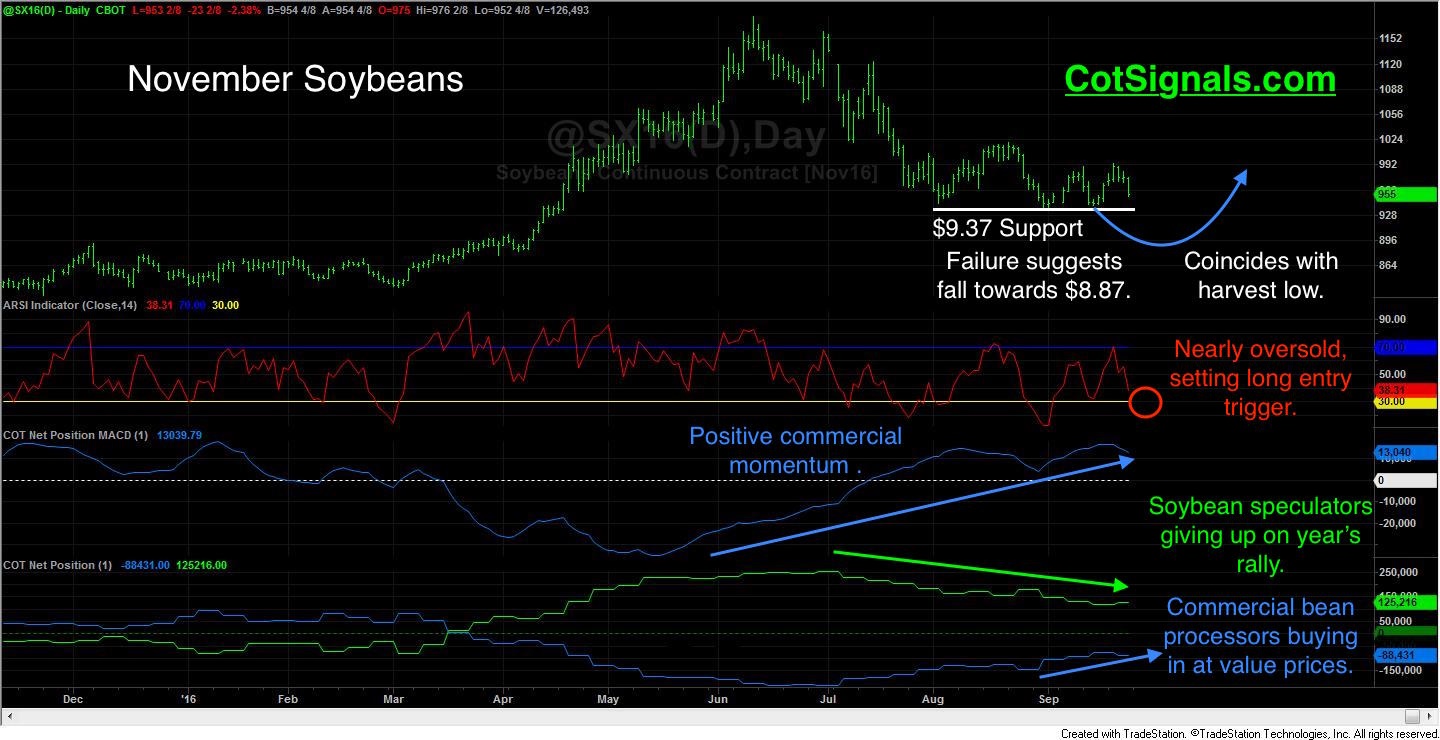This past week was all about the financial markets and the BOJ and FOMC. Two weeks ago, the grain markets were the center of attention specifically, the soybean market. The supply and demand report along with the National Oilseed Processors Association (NOPA) crush report provided a pretty good indication of the bean market supply and demand. This week, we’ll look at the technical action this has created as the market heads towards its seasonal harvest low.
The grain markets typically consist of three main trades per year. The first is the spring rally, which extends into early summer. This is due to spring planting worries and is driven by the processors locking in part of the coming year’s necessary supply. The spring planting rally is akin to the “January Effect” in the stock market. Everyone knows that new money will be put to work in the grain markets, the question becomes, “when” not, “if.” This is also the first, and typically, most aggressively bought speculative rally. The catastrophe mindset rules this trade, and you can’t catch the whole rally if you aren’t in it from the beginning. You’ll see on the chart below that commercial processors bought future supplies from January – March while the large speculators did their buying between March and May.
This brings us to the second trade of the year; the slow grind lower. Once the crops are in and have emerged, acreage numbers begin to mean something. As the coming year’s supplies become more clearly defined and weather remains roughly average, the grain markets top out. Farmers hedging their crop may just be beginning or, they may be finishing the year’s sales but either way, it simply adds selling pressure to a market that, under normal circumstances had probably been driven too high earlier in the year.

This brings us to the current situation and the grain market’s third and final trade of the year, the harvest bounce. The month of September has twice seen soybeans try, and fail, to climb above $10. The congestion appeared to begin giving way, Friday as the market dropped more than $.20. We think this leg down is a buying opportunity. We’re not sure if the $9.37 area will hold, but we’ll put on a partial position above this level. If $9.37 fails, we expect perhaps another $.50 worth of decline, although persistent processor purchasing could support the market before reaching its downside, technical objective. Given the technical and seasonal landscape, a decline through $9.37 and towards $9.00 may be the perfect long entry in line with the end of September seasonal low.




